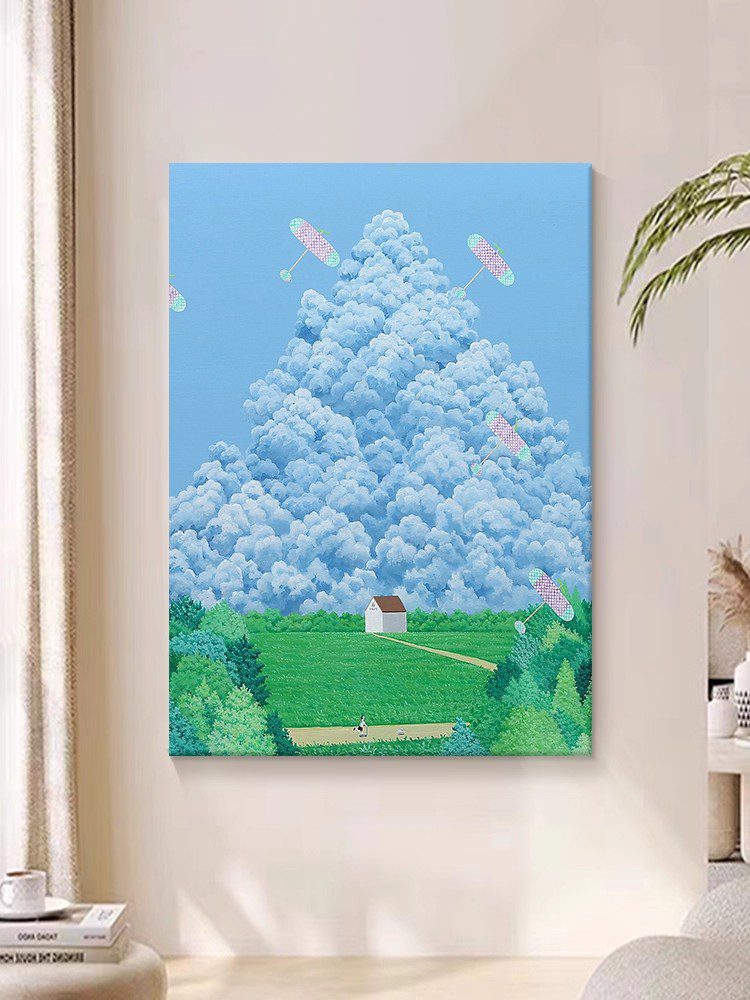Uncovering the Hidden Potential of Niche Hand-Painted Oil Artworks: Trends and Strategies for Collectors
The market for hand-painted oil artworks is vast, yet many collectors overlook niche segments that offer unique opportunities for cultural enrichment and long-term appreciation. These overlooked areas—ranging from regional traditions to experimental techniques—often harbor undervalued talents whose works resonate deeply with specific audiences but remain underrepresented in mainstream galleries. By exploring these niches, collectors can discover artworks that align with personal values, support emerging ecosystems, and potentially yield significant returns as tastes evolve. Below, we delve into key strategies for identifying and engaging with niche hand-painted oil art, emphasizing context, community, and innovation.
1. Regional and Folk Art Traditions: Rediscovering Local Narratives
Art rooted in specific geographic or cultural contexts presents a compelling avenue for niche collecting. Many regions boast centuries-old oil painting traditions that reflect local landscapes, myths, or social histories, yet these works are often overshadowed by global art movements. For instance, certain mountainous or coastal communities have developed distinct styles characterized by bold color palettes, symbolic motifs, or narrative techniques passed down through generations. Collectors who seek out these artworks not only acquire pieces with profound cultural significance but also contribute to preserving intangible heritage at risk of fading.
Engaging with regional art requires building relationships with local galleries, cultural institutions, or artist collectives. These networks provide insights into the historical and social contexts of the works, helping collectors understand their value beyond aesthetic appeal. Additionally, supporting regional artists fosters economic sustainability in areas where traditional crafts may struggle to compete with industrialized art production. As global interest in cultural diversity grows, artworks tied to specific locales are increasingly recognized for their authenticity and ability to tell stories that resonate across borders, making them attractive to institutions and private collectors alike.
2. Experimental and Hybrid Techniques: Bridging Tradition and Innovation
Artists who push the boundaries of oil painting through unconventional materials or methods represent another promising niche. These creators often blend oil with mixed media, such as textiles, found objects, or digital elements, challenging perceptions of what constitutes a “traditional” painting. For example, some artists incorporate natural pigments sourced from their environment, creating works that evolve over time as materials interact with light and air. Others use layering techniques to explore themes of memory or identity, resulting in textured, multi-dimensional pieces that invite prolonged engagement.
Collecting experimental oil art requires an openness to ambiguity and a willingness to embrace risk. These works may not align with conventional aesthetic standards, but their innovative approaches can spark meaningful conversations about art’s role in contemporary society. Collectors who champion such artists often become advocates for their careers, helping them secure exhibitions or grants that elevate their profiles. Over time, as experimental techniques gain acceptance, early acquisitions may appreciate significantly, driven by their rarity and the artist’s growing reputation.
3. Underrepresented Voices: Amplifying Diversity in the Art World
Niche collecting also offers a platform to elevate artists from marginalized communities, including women, LGBTQ+ individuals, ethnic minorities, or those with disabilities. Historically, systemic barriers have limited these creators’ access to mainstream art markets, resulting in a wealth of undiscovered or undervalued talent. Today, collectors are increasingly recognizing the importance of diversity in their holdings, seeking artworks that reflect a range of perspectives and experiences. Oil paintings by underrepresented artists often address themes of identity, resistance, or resilience, offering profound emotional and intellectual depth.
To identify such works, collectors can explore grassroots exhibitions, artist residencies, or online platforms dedicated to promoting diversity. Engaging directly with artists or community organizations ensures transparency and ethical acquisition, avoiding the pitfalls of cultural appropriation or exploitation. By prioritizing inclusivity, collectors not only enrich their collections but also contribute to a more equitable art ecosystem. As institutions and media outlets amplify these voices, the demand for artworks by underrepresented creators is likely to rise, enhancing their long-term value.
4. Micro-Movements and Ephemeral Trends: Capturing the Zeitgeist
Some niche opportunities arise from transient cultural phenomena or micro-movements that attract passionate but limited followings. These could include artworks inspired by niche hobbies, subcultures, or environmental movements, such as paintings depicting urban exploration, retro gaming, or climate activism. While such trends may seem niche today, they can gain broader relevance as societal values shift. For example, art focused on sustainability or mental health has seen increased interest as these issues dominate public discourse.
Collecting within these micro-movements requires a keen awareness of cultural currents and a willingness to act quickly. Artworks tied to emerging trends may initially be accessible at lower price points, offering collectors the chance to acquire meaningful pieces before they enter the mainstream. However, this strategy demands careful research to distinguish fleeting fads from movements with lasting impact. By staying attuned to social media, independent publications, and community events, collectors can identify early indicators of rising interest and position themselves ahead of the curve.
The world of niche hand-painted oil art is rich with opportunities for collectors willing to look beyond the mainstream. By exploring regional traditions, experimental techniques, underrepresented voices, and micro-movements, enthusiasts can build collections that are both personally meaningful and potentially valuable. These niches not only offer aesthetic diversity but also foster cultural preservation, innovation, and social equity. As the art market continues to evolve, collectors who embrace these overlooked segments will play a crucial role in shaping its future, ensuring that a wider range of stories and styles are celebrated and sustained.
